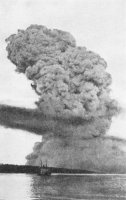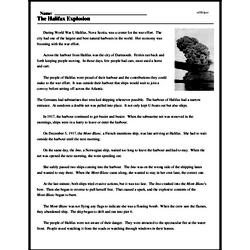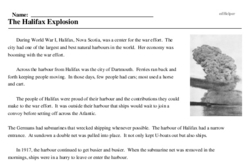The Halifax Explosion
During World War I, Halifax, Nova Scotia, was a center for the war effort. The city had one of the largest and best natural harbours in the world. Her economy was booming with the war effort.
Across the harbour from Halifax was the city of Dartmouth. Ferries ran back and forth keeping people moving. In those days, few people had cars; most used a horse and cart.
The people of Halifax were proud of their harbour and the contributions they could make to the war effort. It was outside their harbour that ships would wait to join a convoy before setting off across the Atlantic.
The Germans had submarines that wrecked shipping whenever possible. The harbour of Halifax had a narrow entrance. At sundown a double net was pulled into place. It not only kept U-boats out but also ships.
In 1917, the harbour continued to get busier and busier. When the submarine net was removed in the mornings, ships were in a hurry to leave or enter the harbour.
On December 5, 1917, the Mont-Blanc, a French munitions ship, was late arriving at Halifax. She had to wait outside the harbour until the next morning.
On the same day, the Imo, a Norwegian ship, waited too long to leave the harbour and had to stay. When the net was opened the next morning, she went speeding out.
She safely passed two ships coming into the harbour. The Imo was on the wrong side of the shipping lanes and wanted to stay there. When the Mont-Blanc came along, she wanted to stay in her own lane, the correct one.




